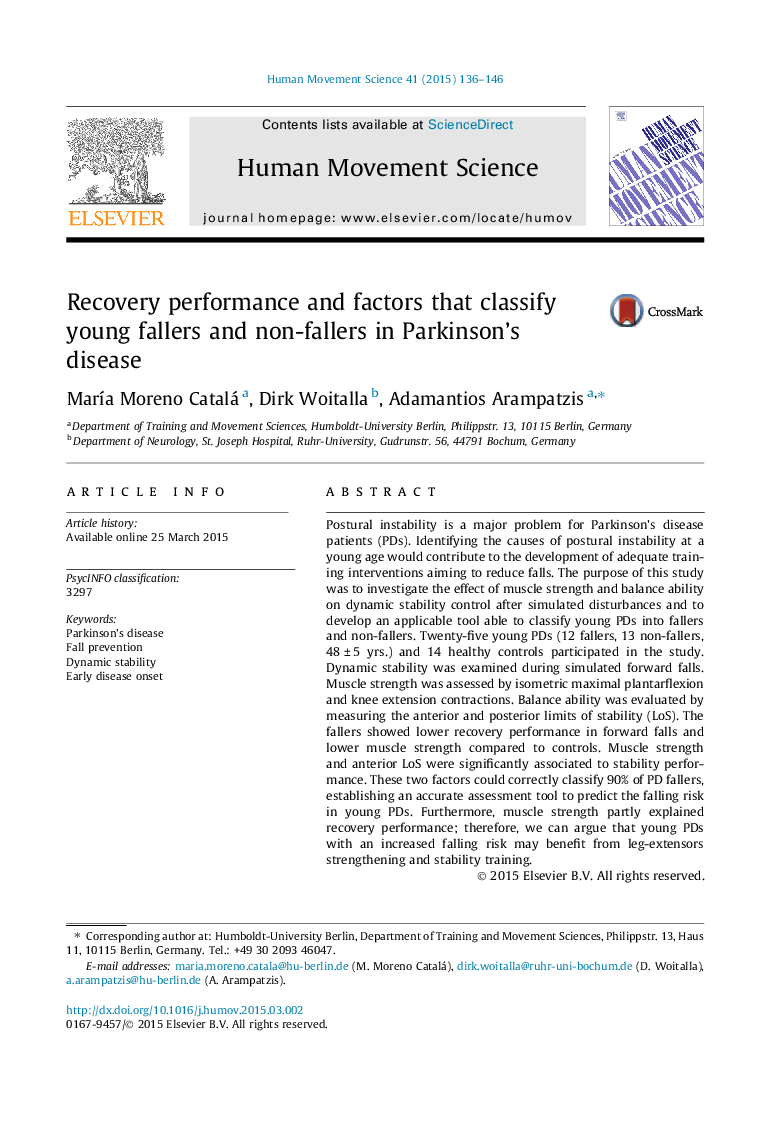| Article ID | Journal | Published Year | Pages | File Type |
|---|---|---|---|---|
| 7291963 | Human Movement Science | 2015 | 11 Pages |
Abstract
Postural instability is a major problem for Parkinson's disease patients (PDs). Identifying the causes of postural instability at a young age would contribute to the development of adequate training interventions aiming to reduce falls. The purpose of this study was to investigate the effect of muscle strength and balance ability on dynamic stability control after simulated disturbances and to develop an applicable tool able to classify young PDs into fallers and non-fallers. Twenty-five young PDs (12 fallers, 13 non-fallers, 48 ± 5 yrs.) and 14 healthy controls participated in the study. Dynamic stability was examined during simulated forward falls. Muscle strength was assessed by isometric maximal plantarflexion and knee extension contractions. Balance ability was evaluated by measuring the anterior and posterior limits of stability (LoS). The fallers showed lower recovery performance in forward falls and lower muscle strength compared to controls. Muscle strength and anterior LoS were significantly associated to stability performance. These two factors could correctly classify 90% of PD fallers, establishing an accurate assessment tool to predict the falling risk in young PDs. Furthermore, muscle strength partly explained recovery performance; therefore, we can argue that young PDs with an increased falling risk may benefit from leg-extensors strengthening and stability training.
Related Topics
Life Sciences
Neuroscience
Cognitive Neuroscience
Authors
MarÃa Moreno Catalá, Dirk Woitalla, Adamantios Arampatzis,
